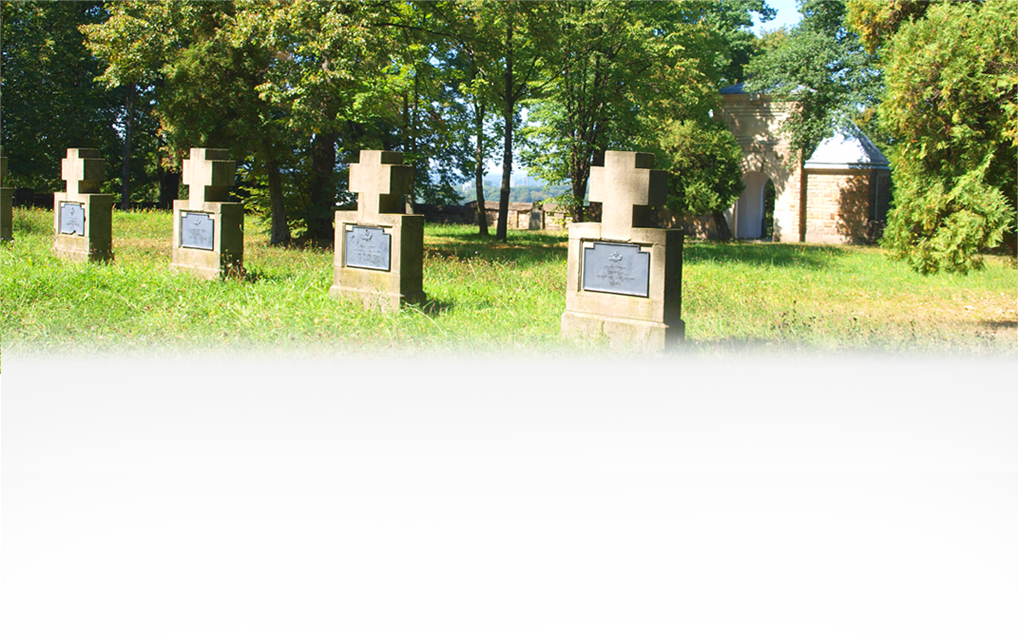The section at the municipal cemetery was established on a plan similar to a parallelogram with indentations in the eastern corners. On three sides, the fence is made up of a stone wall with a concrete cover (originally, it was covered with a shingle roof), adjusted with faults to the lay of the land, and on the eastern side, it consists of concrete posts, which slightly taper towards the top, linked by an iron chain.
The main element of the section is a monument built in the western wall in the form of a stone gate with two openings, ended with a “ donkey-back” arch, covered with shingles and surmounted with a small cross. At the roof edges, there were originally small wooden crosses. On both sides of the monument, there are visible large Latin crosses shaped by protruding thread stones. On the section side, at the arm crossing, there is a bas-relief of Christ's head in a crown of thorns. On the outer side of the monument, there is an additional wooden Latin cross, on which a figure of crucified Christ was originally placed. Trees growing in the section include acacias, red oaks and lindens.
In the section, there are tombstones in the form of:
- flat bar Latin crosses with a rectangular frame at the base, set on concrete pedestals,
- flat bar Latin crosses with a glory around the arm crossing and a rectangular frame at the base, set on concrete pedestals,
- three flat bar Latin crosses with a rectangular frame at the base, set on a shared pedestal.
Seventy-eight soldiers of the Austro-Hungarian army, four soldiers of the German army and two soldiers of the Russian army were buried in four mass and 55 individual graves. The names of 22 buried soldiers are known.
